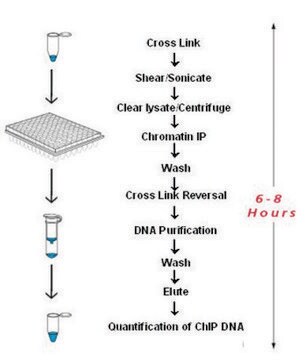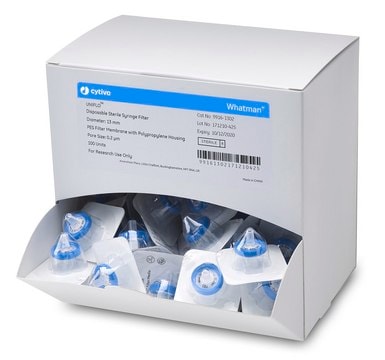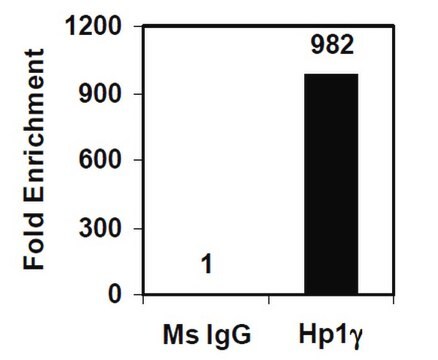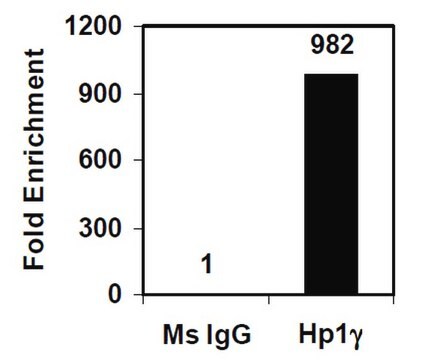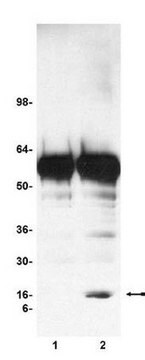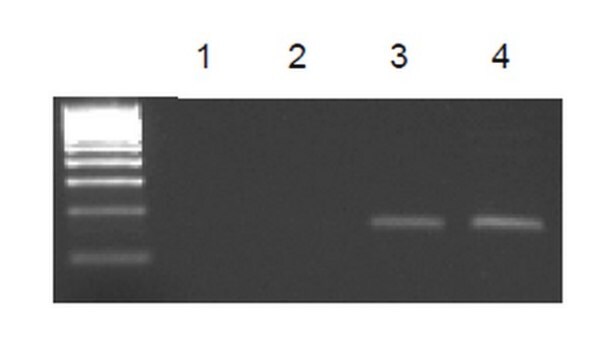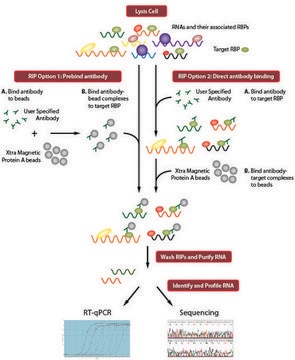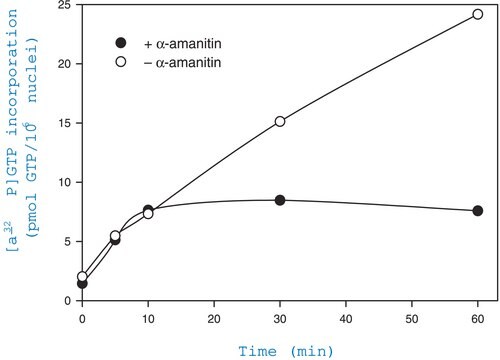CHP2
Imprint® Ultra Chromatin Immunoprecipitation Kit
Complete ChIP kit for sensitivity, compatibility with Next-Gen sequencing
About This Item
Prodotti consigliati
Descrizione generale
Applicazioni
- Suitable for downstream applications
- Individual target characterization to genome-wide profiling techniques
- Characterization of signal transduction pathways
- Verification of ChIp-chIP and ChIP-seq data
Caratteristiche e vantaggi
- Use successfully CHiP′ed DNA associated with low abundance, medium, and highly expressed transcription factors, as well as histone modifications
- Greater capacity - can be used over a wide range of cell numbers ranging from 2-10 × 106
- Maximum sensitivity - capable of detecting low abundance transcription factors with as little as 2 × 106 cells
- Employs DNA-Blocked "Staph-Seq" for IP (immunoprecipitation), minimizing contaminating Staph A DNA in downstream ChIP-Seq applications.
Note legali
Solo come componenti del kit
- Sodium dodecyl sulfate solution, for molecular biology, 10% in 18 megohm water
- Monoclonal Anti-POLR2A antibody produced in mouse, clone 1F17, purified immunoglobulin, buffered aqueous solution
I componenti del kit sono disponibili anche separatamente
- S6576ChIP Next Gen Seq Sepharose™SDS
- I8896IGEPAL® CA-630, for molecular biologySDS
- S5150Sodium chloride solution, 5 M in H2O, BioReagent, for molecular biology, suitable for cell cultureSDS
- W4502Water, Nuclease-Free Water, for Molecular BiologySDS
- I5006IgG from rabbit serum, reagent grade, ≥95% (SDS-PAGE), essentially salt-free, lyophilized powderSDS
- I5381IgG from mouse serum, reagent grade, ≥95% (SDS-PAGE), lyophilized powderSDS
- A7638Bovine Serum Albumin, lyophilized powder, essentially globulin free, ≥99% (agarose gel electrophoresis)SDS
- A84564-(2-Aminoethyl)benzenesulfonyl fluoride hydrochloride, ≥97.0% (HPLC)SDS
- D9156Deoxyribonucleic acid, single stranded from salmon testes, For hybridizationSDS
- M7023Anti-Mouse IgG (whole molecule) antibody produced in rabbit, IgG fraction of antiserum, buffered aqueous solutionSDS
- P8340Protease Inhibitor Cocktail, for use with mammalian cell and tissue extracts, DMSO solutionSDS
- R4642Ribonuclease A from bovine pancreas, (Solution of 50% glycerol, 10mM Tris-HCL pH 8.0)SDS
Prodotti correlati
Raccomandato
Avvertenze
Danger
Indicazioni di pericolo
Classi di pericolo
Acute Tox. 4 Oral - Aquatic Acute 1 - Aquatic Chronic 1 - Eye Dam. 1 - Flam. Liq. 3 - Met. Corr. 1 - Ox. Liq. 1 - Resp. Sens. 1 - Skin Corr. 1A - STOT SE 3
Organi bersaglio
Central nervous system
Codice della classe di stoccaggio
5.1A - Strongly oxidizing hazardous materials
Scegli una delle versioni più recenti:
Certificati d'analisi (COA)
It looks like we've run into a problem, but you can still download Certificates of Analysis from our Documenti section.
Se ti serve aiuto, non esitare a contattarci Servizio Clienti
Possiedi già questo prodotto?
I documenti relativi ai prodotti acquistati recentemente sono disponibili nell’Archivio dei documenti.
I clienti hanno visto anche
Articoli
Epigenetic modifications are thought to occur through two key interconnected processes—DNA methylation and the covalent modification of histones.
Protocolli
Chromatin Immunoprecipitation qPCR for studying gene regulation across conditions.
Il team dei nostri ricercatori vanta grande esperienza in tutte le aree della ricerca quali Life Science, scienza dei materiali, sintesi chimica, cromatografia, discipline analitiche, ecc..
Contatta l'Assistenza Tecnica.
